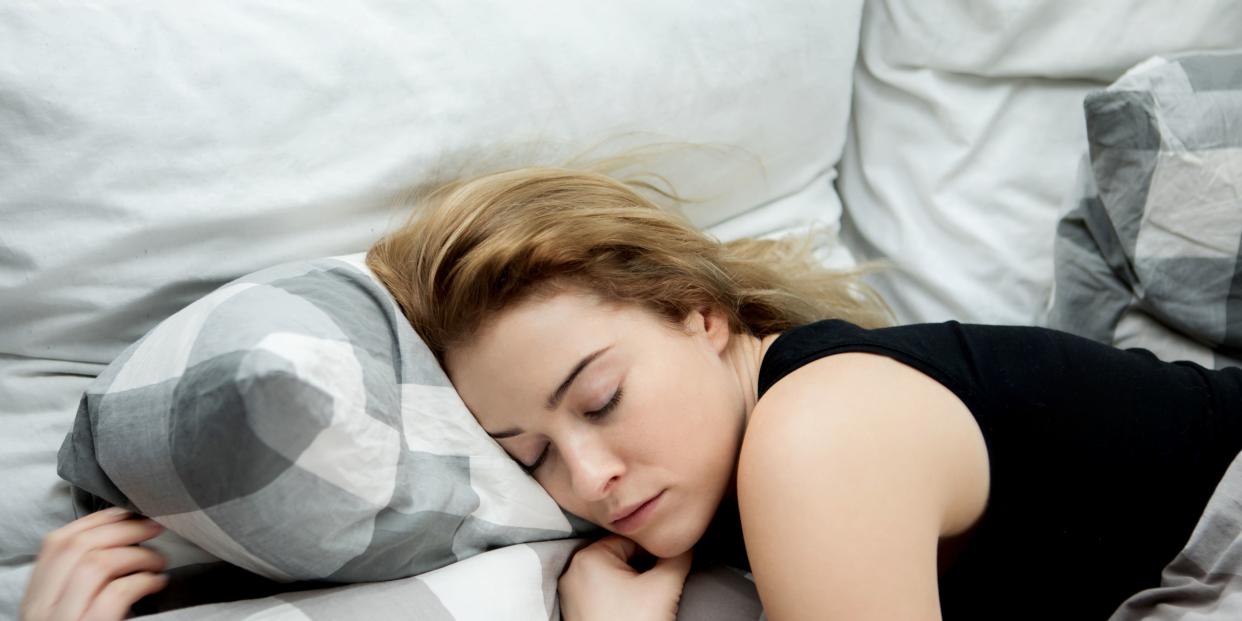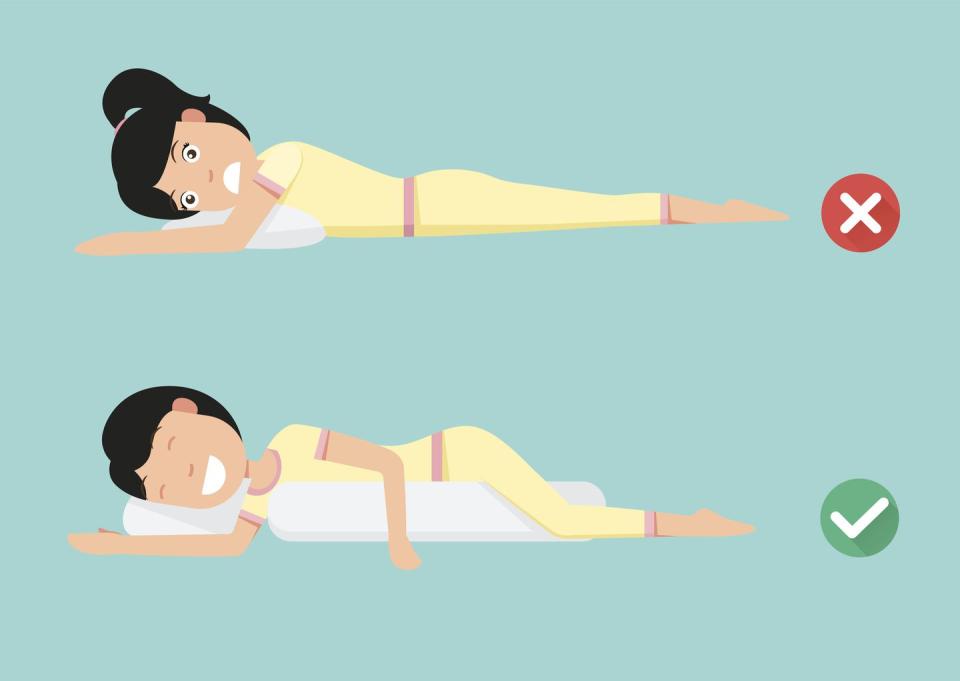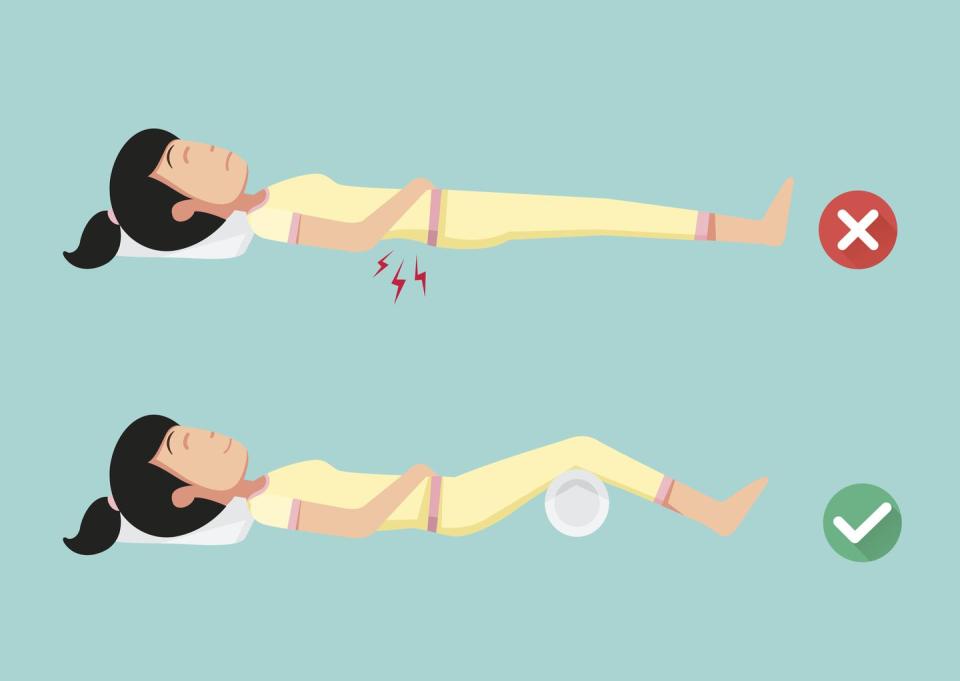Exactly How to Sleep If You Have Lower Back Pain

Heading out to ride early every morning is hard enough without having to deal with nightly back pain. It’s as puzzling as it is frustrating: If sleep is supposed to be rejuvinating, why do you wake up so stiff all the time? Simple: It’s because you’ve just spent eight hours in one position, says Andrew Gitkind, M.D., medical director of the Montefiore Spine Center.
That’s why it’s so important to sleep in a position that won’t aggravate any existing aches, especially if you struggle with lower back pain, says Jennifer L. Solomon, M.D., board-certified physiatrist in physical medicine and rehabilitation at the Hospital for Special Surgery (And if you haven’t already dealt with a sore back, there’s a good chance it’ll hit you at some point; 80 percent of adults will deal with back pain in their lifetimes, according to the National Institutes of Health).
Related: Find 52 weeks of tips and motivation, with space to fill in your mileage and favorite routes, with the Bicycling Training Journal.
Here’s exactly how you should sleep-and how you shouldn’t-to wake up refreshed and back pain-free.
How to sleep with lower back pain
Your main goal is to keep your spine in a neutral position, which includes your back in relation to your hips and pelvis, Gitkin says. You can achieve this either on your back or your side with a pillow to assist in keeping your spine straight. “The ideal positions are on your back with a pillow underneath your knees or on your side with a pillow in between your knees,” Solomon says. You’ll also want to be sure to use a supportive pillow (Check out these picks for the best pillows for back sleepers and the best pillows for side sleepers).
1. On your side with a pillow between your legs

2. On your back with a pillow under your knees

The worst sleep position for back pain
Stomach snoozers, listen up: The way you’re sleeping is absolutely terrible for your lower back. Resting your head to the side puts major stress on your cervical spine, or the area at the base of the neck, Gitkin says, and can mess with the alignment of the rest of your spine as well.
Looking for other solutions? Here are 10 Ways To Sleep Better for Under $150
If you keep waking up on your belly, Solomon suggests taping tennis balls to your chest. Sounds weird, but it works. “It will be so uncomfortable, that you’ll be forced to flip over,” she says. It should also help you get used to the new, back-protecting position.
Is it time to replace your mattress?
If you’re already sleeping with good posture and are still waking up with lower back pain, your bed may be to blame. A high-quality mattress should last around 10 years, but the National Sleep Foundation recommends replacing yours after five if you’re not sleeping well.
“Firmer mattresses tend to be better for chronic pain because they provide adequate support,” Michael Grandner, Ph.D., director of the Sleep and Health Research Program at the University of Arizona College of Medicine, told Prevention in a previous interview. Sleeping on a bed for a week or two is the best way to know whether a mattress is right for you, so he recommends buying one with a generous return policy.
('You Might Also Like',)

